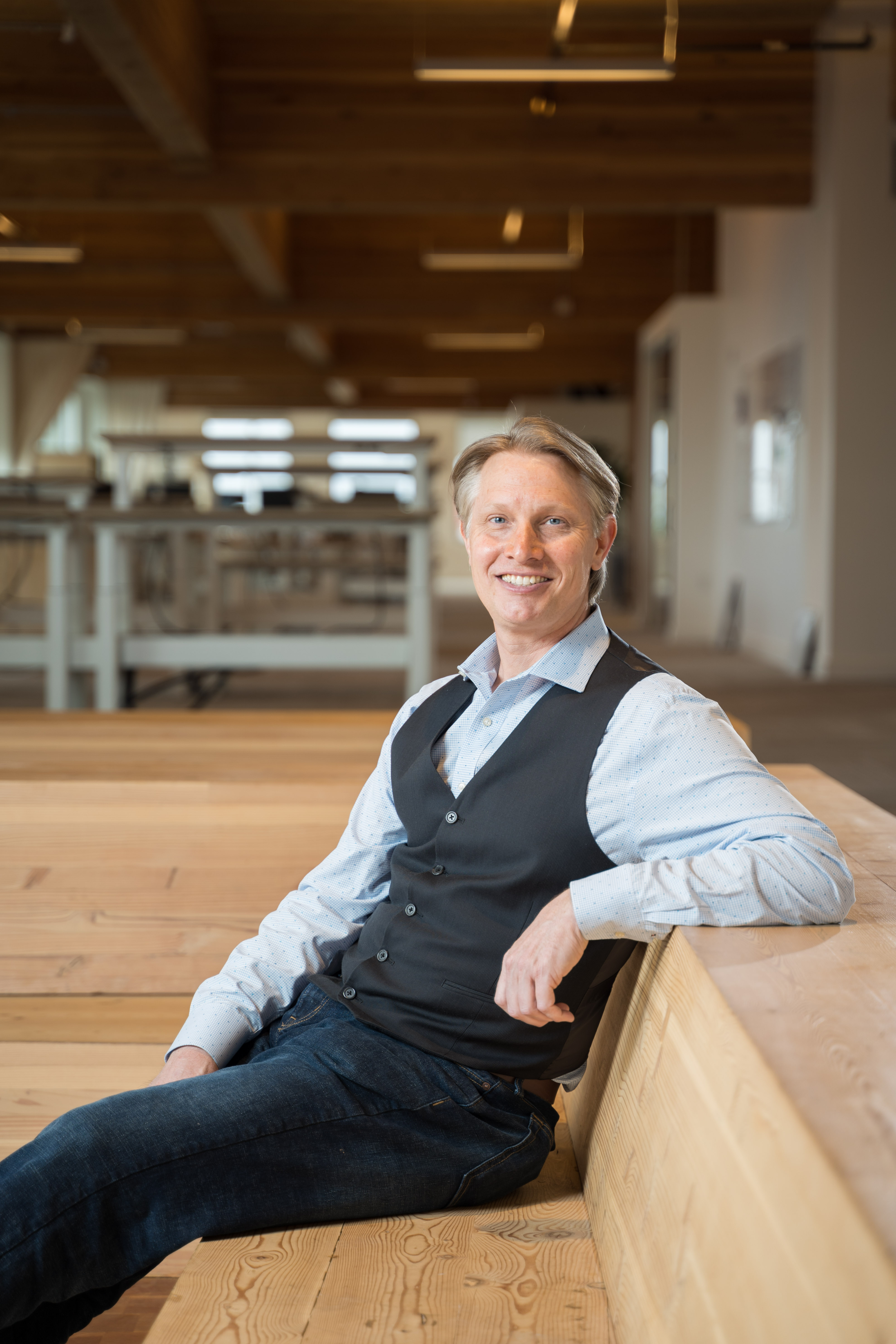For many people in the AEC industry, Ethan Martin is known as “the wood guy.” As the former Northwest Regional Director at WoodWorks, Ethan lives and breathes mass timber. He joined DCI Engineers in 2020, leveraging experience, professional relationships and—most importantly—passion to further advance the firm’s presence in the mass timber market.
As someone who personally helped bring tall mass timber construction to the U.S.—specifically for his work in the State of Oregon developing the prototypes for getting Type IV-B and Type IV-C construction initiated—Ethan is positioned to help DCI tackle one of our industry’s most pressing and challenging topics of our time: sustainability.

In his role as Director of Sustainability & Mass Timber at DCI Engineers, Ethan will be spearheading efforts to integrate more sustainable practices into DCI’s design process – spanning various markets, materials, and delivery methods.
It’s a universal approach to doing things better.
“Ethan’s role is paramount to our focus and continued efforts to expand the roles and responsibilities of structural engineers in the built environment,” notes Jeff Brink, DCI’s CEO and Principal in the San Francisco office.
That effort includes DCI’s recent commitment to the SE 2050 Challenge, a pledge to achieve Net Zero status in all projects by the year 2050.
“[SE 2050] allows us to share our research and knowledge on embodied carbon as well as combine our efforts with like-minded groups to reduce the impact of the built environment pollution on our planet,” Ethan said in an earlier press release. “While architects have been committed to the AIA 2030 Challenge focusing on operational energy for years, the focus now turns to the structural community.”
While Ethan says he’ll “always be a wood guy,” he notes there is great potential in the other materials we work with.
Materials like concrete off-gasses throughout its life, putting CO2 into the atmosphere; but, as Ethan notes, concrete is simply a chemical calculation, requiring some tweaks to the chemistry. There are some products on the market now that mineralize the concrete, which actually takes in CO2 versus off gassing it.
“The concrete industry is also doing a better job today of getting more certified facilities and providing education to batch plants on how to create better mix designs, some of which are standardized,” he says. “That industry has taken big steps within its own silo of creating change and the education around it.”
When it comes to steel, Ethan notes it’s the heat and energy required to melt and reform it that produces a majority of the pollution, creating a unique challenge.
“People are talking about the use of arc-ion furnaces, which uses electricity instead of coal, but not every mill is going to be using that,” he says. “While you can get the most common sized steel beams from every supplier, specifying an entire steel package will likely be getting materials from, ‘this mill and that mill’ so you don’t always know where it’s being sourced. So, it comes down to a matter of tracking.”
Even wood—which has a crop rotation every 40 to 50 years typically—has room for improvement, says the wood guy.
“The wood industry has suffered, in that, forty years ago, we said, ‘Don’t cut down trees.’ So now, years later, we have overgrown forests that are fueling forest fires,” he notes somberly. “A good healthy forest is about 800 to 900 trees per acre, and right now we’re running about 3,000 trees per acre, so it’s just too much fuel load.”

With sustainable practices, part of the solution is going to the source.
“At DCI, we’re working with industry partners and federal grants to get forest thinning included in some of the forest certifications,” Ethan says. “Commercial thinning was a once common practice; but because it isn’t so much anymore, it’s just one of the reasons we are experiencing overly dense forests leading to ‘out of control’ forest fires regularly seen on the news.”
Ultimately, the goal is to find ways to utilize all available materials that meet sustainability goals – whether that’s using them individually or creating hybrid systems that capitalize on their individual strengths. And, it’s ultimately about helping educate clients along the way as the industry moves in the right direction.
“Helping clients address sustainability starts with understanding where they currently are: what they know, what their experience has been thus far and if they have any specific goals – if any,” he notes. “From there we can establish a basis of understanding and start the real conversations surrounding sustainability.”
Erin Spaulding, Associate, Communications Manager | Erin comes from a journalism background with an emphasis in feature writing. She enjoys capturing the unique details of a story and is a firm believer that every person (and every project, for that matter) has a story to tell. Erin loves running, fly fishing and learning about unique spaces. Back in Michigan, she owns a little studio condo that's been readapted from an asylum and turned into a mixed-use residential building.


